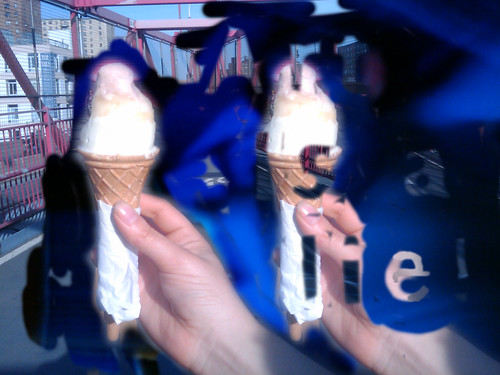Allen Ginsberg is arguably the most well-known Buddhist poet. Famously, he met Chogyam Trungpa on the streets of New York–as they were vying for the same cab. They shared the cab and discovered during the trip that they were both poets. Later that night, they met for a drink downtown and showed each other their work. Ginsberg pulled out his masterpiece Howl; Trungpa showed Ginsberg the piece he had recently written–the Sadhana of Mahamudra!
In this ongoing dharma poetry series, we have looked at the works of Wallace Stevens, John Ashberry, and Lydia Davis, all writers who have investigated Buddhist ideas in their works. Today I want to take a peek at one of grandpa Ginsberg’s most famous works, Witchita Vortex Sutra, and notice how Ginsberg uses language to bring out certain Buddhist themes, particularly that of embodiment.
Click here to read the entire poem.
Whether you like Ginsberg or not, this is a remarkable piece of deeply religious, anti-war protest poetry. In his trademark ecstatic beat lyricism–which he learned from Whitman–Ginsberg performs for us here a kind of spontaneous visionary prayer. He invokes many deities and past masters, from Shambu Bharti Baba to the Tathagata to Christ, in his quest for what he calls “the right language”. The poet is “almost in tears to know / how to speak the right language–“. Certain Buddhist themes are more or less literally presented here, for example that of devotion, but what most compels me here is the way Ginsberg sings of the the body, the way he invokes the sambhogakaya.
In this poem, Ginsberg uses the word “body” five times…
He speaks of “our trembling bodies” and the “body universe.” He sings of breasts, faces, skin, abdomen, hair, legs, eyes, and bellies. Again calling on a Whitmanesque erotic expansiveness, with an almost embarrassingly flamboyant diction, Ginsberg calls forth “the bodylove emanating in a glow of beloved skin.” As I read it, the guy is bursting with the subtle energy of the sambhogakaya.
Reggie Ray defines the sambhogakaya as follows: “the ‘body of enjoyment,’ the kind of resplendent, nonmaterial form taken by the buddhas, bodhisattvas, and departed masters in religious visions.” Through a passionate going-under, an intense immersion in the nirmanakaya, that is, the ‘created body’ of human flesh and blood, Ginsberg appears to attempt with this poem a kind of transport into another realm, into the invisible world, where he will meet with celestial buddhas who will help him recover “the right language”, mellifluous and compelling, communicating to others just what they need.
Of course, I’m not claiming old Allen was anything other than an ordinary person. But what I am saying is that Ginsberg is taking risks with language here that I admire. And when I do my bodywork meditations, I do feel a hint of that enanating “bodylove” coursing through. And when I sit down to think and talk and write dharma, I am seeking that “right language,” the one that will speak to people directly in the moment and tell them what they need to hear. And I believe that we just might need this kind of passionate language again to get at whatever it is exactly we’re all trying to get at. Call me old-fashioned, Ginsberg still does it for me. You know, when I’m in a certain mood.
More: Click here to hear a recording of Philip Glass’s composition, Wichita Vortex Sutra.
Or: Click here to hear Allen Ginsberg reading his famous poem America.

